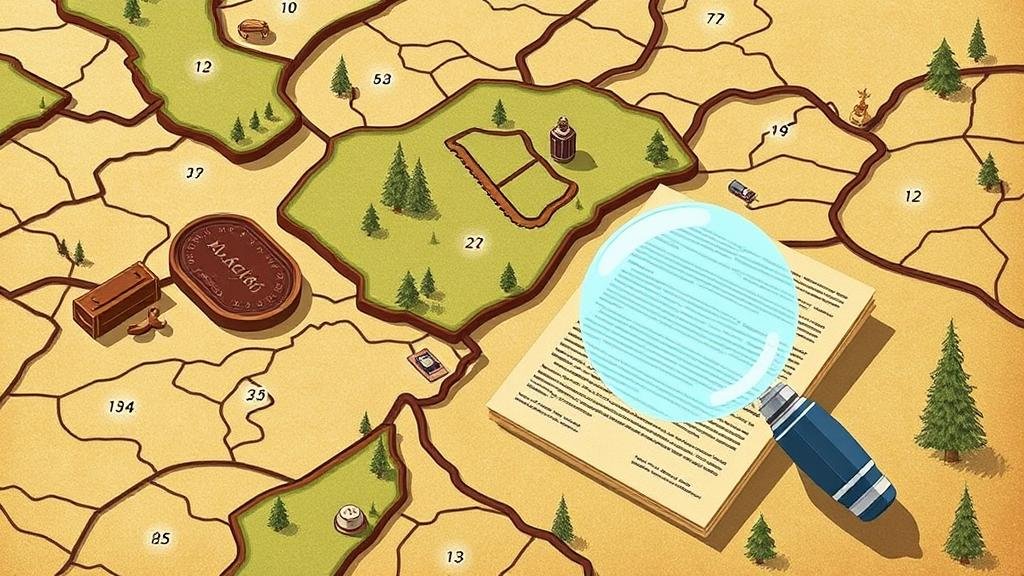Leveraging AI to Analyze Historical Land Deeds for Clues to Hidden Artifact Caches
Leveraging AI to Analyze Historical Land Deeds for Clues to Hidden Artifact Caches
In recent years, the integration of artificial intelligence (AI) in historical research has emerged as a transformative approach to uncovering artifacts and understanding historical contexts. This article explores the application of AI in analyzing historical land deeds, uncovering hidden artifacts, and enhancing archaeological methodologies.
Introduction
Historical land deeds serve as critical documents that provide insights into property ownership, land usage, and socio-economic conditions of past societies. The evolution of AI technology has facilitated the analysis of these documents, revealing hidden patterns and potential locations of artifact caches. Understanding this intersection of technology and history can significantly contribute to archaeology and heritage preservation.
Background on Historical Land Deeds
Land deeds, particularly in the United States, date back to colonial times and provide a wealth of information. For example, the Massachusetts Land Records, which were established in 1620, highlight land transactions that can inform researchers about settlement patterns and resource allocation. Analyzing these records can lead to the identification of areas where human activity was concentrated, potentially indicating locations of artifact caches.
AI Technologies in Historical Analysis
The application of AI within the context of analyzing historical land deeds includes several methodologies:
- Natural Language Processing (NLP): NLP techniques can be used to extract relevant information from scanned documents, even when the text is handwritten or poorly printed.
- Machine Learning Algorithms: Algorithms can be trained to recognize patterns in land transaction data, identifying unusual patterns that may suggest locations of hidden artifacts.
- Geospatial Analysis: AI can also be integrated with geographic information systems (GIS) to map land transactions against known archaeological sites.
Methodologies for Analysis
Useing AI in the analysis of land deeds involves several systematic steps:
- Data Collection: Digitization of historical land deeds from relevant archives, such as local government offices and libraries.
- Data Preparation: Cleaning and formatting the data to prepare it for analysis, including OCR (Optical Character Recognition) techniques for processing text.
- Pattern Recognition: Utilizing machine learning models to analyze the data for trends, common property lines, and unusual ownership patterns.
- Artifact Correlation: Cross-referencing identified patterns with archaeological records to hypothesize potential artifact locations.
Case Study: The Discovery of Artifacts in New England
In a practical application, researchers at Brown University utilized AI to enhance the analysis of land deeds in Rhode Island. By examining records from 1750 to 1850, they combined NLP and GIS technologies to identify areas with high land turnover, which commonly indicates settlement expansion. This study resulted in targeted archaeological digs, eventually uncovering colonial-era artifacts, such as ceramics and tools, corroborating the historical transaction data.
Challenges and Ethical Considerations
While the benefits of leveraging AI in analyzing historical land deeds are substantial, several challenges remain:
- Data Quality: Historical documents often possess varying degrees of legibility, requiring robust OCR and NLP technologies for accurate analysis.
- Cultural Sensitivity: Archaeological endeavors must be undertaken with consideration for local communities and their historical narratives.
- Intellectual Property: Determining ownership and control over recovered artifacts raises ethical questions regarding cultural heritage.
Future Directions
Moving forward, the incorporation of AI into archaeological research will likely advance through greater collaboration between computer scientists and historians. The potential for improving data accuracy, the development of new machine learning models specific to historical research, and the integration of multidisciplinary approaches will enhance the identification of hidden artifacts. preservation of heritage sites and the engagement of local communities in archaeological processes will remain paramount.
Conclusion
Leveraging AI to analyze historical land deeds is revolutionizing how researchers approach archaeology. The application of sophisticated technologies enables better understanding and identification of artifact caches. With continued development and collaboration across disciplines, AI can play a crucial role in preserving our cultural heritage and illuminating the narratives of historical communities.
Actionable Takeaways
For researchers and institutions interested in this field, consider the following:
- Invest in digitizing historical land documents to create a comprehensive database.
- Engage AI professionals to develop tailored algorithms for specific historical analyses.
- Prioritize community involvement to ensure ethical approaches to archaeological work.



